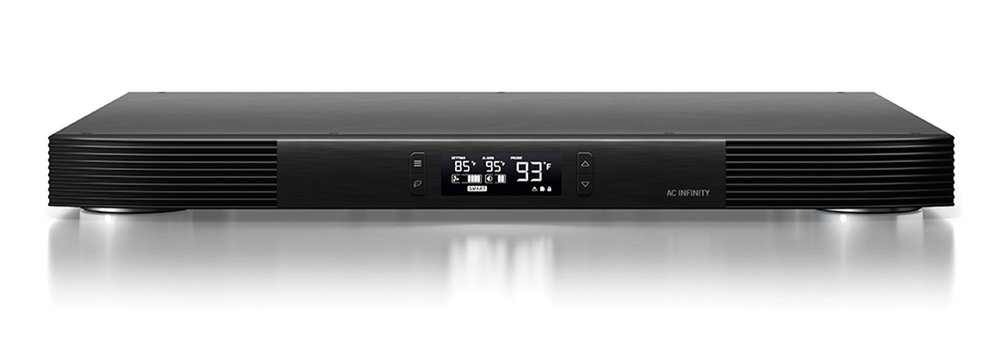
An inexpensive solution designed to extend the optimal performance and life of your gear
Photos by Mike Harkins except top one. All Prices listed are in $US.
I’m a closet audiophile. To keep components, wiring, and geekiness to a minimum, I’ve chosen to keep most components hidden away in a closet behind my loft AV system. Only speakers, TV, and a Blu-ray player are visible from the front (photo 1). That makes for a room that is resistant to potential spousal objections of messiness or lack of décor. And I must admit, I like it that way, too.
So, how does one make for an environment that’s friendly to the stored-away components? Closets certainly aren’t the best place to put electronics.
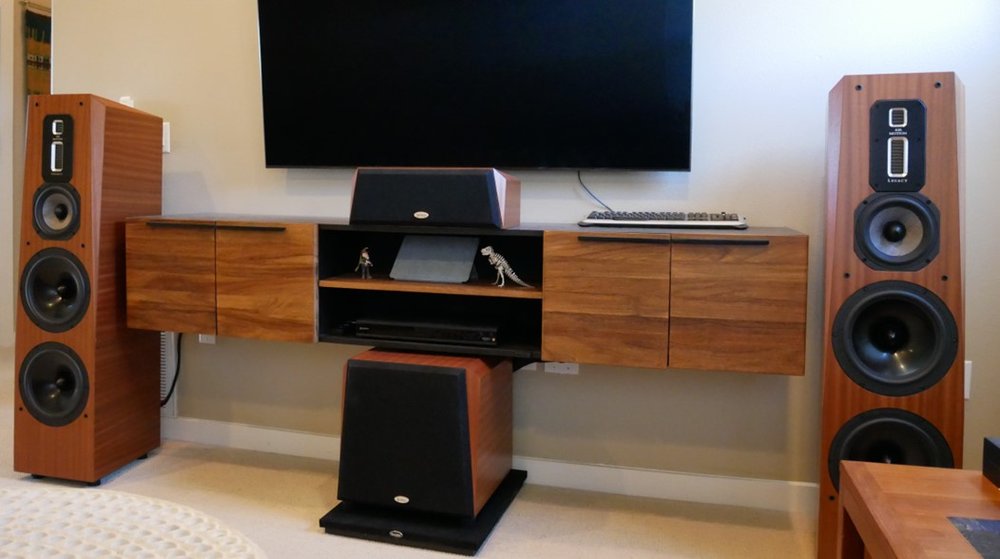
Cool!
I have a cool audio system, but I don’t mean cool in the sense of super-high-end cool—no $100,000 speakers and turntables here—but cool in the sense that it’s running at a cool temperature. Heat’s effect on our components shouldn’t be underestimated—subjected to constant heat, our components will begin to deteriorate, especially those confined to tight, airless quarters. That includes those narrow spaces behind component racks near the wall, which probably describes the majority of our setups.
My closet solution might not be for everyone. It suits me—and I’m sure it would suit many others—but it did present some obstacles I had to get around. First, I had to be able to communicate to the closet by remote control. An installer helped me with this issue by equipping my gear with a remote IR probe, which can communicate with my preamp and allows it full access. Of course, my phone can do the same via my home network, but the remote offers more flexibility in setup, among other things.
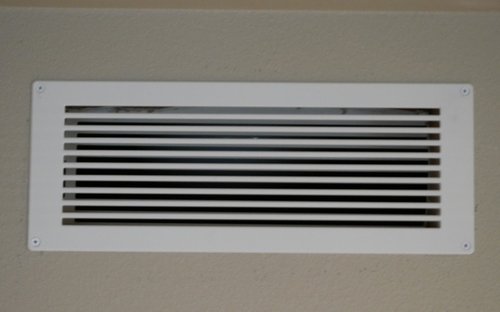
The obvious problem with using a closet is the lack of ventilation. One thing that can be done to alleviate the problem is to install a vent near the top of the closet to let the hot air escape (photo 2). Such a vent is inexpensive to buy and easy to install if you know how to use a keyhole saw. That job alone should help cool things down, but the inside of a closet can still get hot on the warmer days of the year. It’s why it’s best to take an extra step in component cooling if our gear is enclosed in a space with little airflow.
It’s important that our amps and preamps—especially tube ones—have sufficient ventilation to protect them from heat damage, short component life, fires or other damage. At minimum, one should heed the ventilation requirements specified by the manufacturer in the product’s user guide.
To build compact amplifiers without the need for huge heatsinks, some manufacturers have resorted to internal whisper fans attached directly to internal heatsinks. If yours is so equipped, and you’re in a well-ventilated area, there’s little danger of the amplifier overheating. In that case, an external fan may be redundant and not needed.
Tube amps are notorious for being heat generators. Although I doubt that many with tube amplifiers would place them in an area with inadequate ventilation, it’s important to keep in mind that tubes contain actual heaters to make them work (by driving an electron cloud off the cathode). They’re usually quite inefficient compared to solid state amps, and they may consume 500 to 1,500 watts to deliver 50 to 75 watts of power into loudspeakers. When idling, all these watts are going to heat, and that heat will negatively impact the insides of the amplifier near the tubes—unless, of course, those parts are being cooled down.
Transistor junctions can also get quite hot during use. They’re often rated as having a maximum operating temperature of 150˚C, which is well above the boiling point of water. Even inactive components, sharing the same environment as tubes, transistors, and other active components, can benefit from cooling. For example, being exposed to too much heat can cause electrolytic capacitors to start to dry out and lose some capacitance, or short out if the dielectric becomes too weak, leading to component failure.
Cooling makes a huge difference. I know this from my experience in the computer industry. Those IBM 360s and 370s of yesteryear needed their own air conditioning systems, and it’s no different with our audio equipment. Even a small amount of airflow through a product’s chassis can provide sufficient cooling to keep them working reliably. And it’s really about reliability. Heat is the enemy, and components that are constantly subjected to it fail prematurely.
AC Infinity!
California-based AC Infinity (https://acinfinity.com) is a company that specializes in component cooling fans and AV equipment racks. Look on the company’s website under “Products”, then “Equipment Cooling”, and you’ll be greeted by a plethora of cooling devices for seemingly every audio setup. I also think their products look sharp sitting on top of equipment. And their devices make very little noise, which is a good thing if you don’t want your cooling device to interfere with your music listening.
The company was started by a team of acoustic engineers whose equipment, during a studio renovation project, had overheated due to a lack of ventilation. The problem was that fan products on the market at the time were too noisy to be used in a studio environment. By studying the sounds and vibrations caused by air movement, and combining their expertise in mitigating the noise levels in recording studios, the team was able to come up with a fan system that was both silent and effective. Two years later, they decided to go all-in and founded AC Infinity to sell that product, called the AIRPLATE cabinet fan system. The market success of that product allowed AC Infinity to continue to expand the business and develop other cooling and ventilation products. They’ve now been in business for 10 years.
I’m using a few of AC Infinity’s variable speed fans, one being the120mm USB-powered model (about $14) on my Roon Nucleus+ streamer/server in the closet. With this device, I needed to make sure there was enough unobstructed clearance above the fan to allow air to flow freely (photo 3). These fans use less than 2 watts of power and are rated to move air at 52 cfm with 18dB of A-weighted noise at full speed. I usually run mine at medium speed and get more than adequate cooling. If you want something simple with easily controlled speed, such a fan may offer all you need at a fraction of the cost of the larger systems I’ll discuss below. AC Infinity offers wall adapters and a thermal trigger to allow the fan to be powered by an AC outlet and switched on or off based on a preset temperature. That’s an option unavailable when I bought my fan a couple years ago.
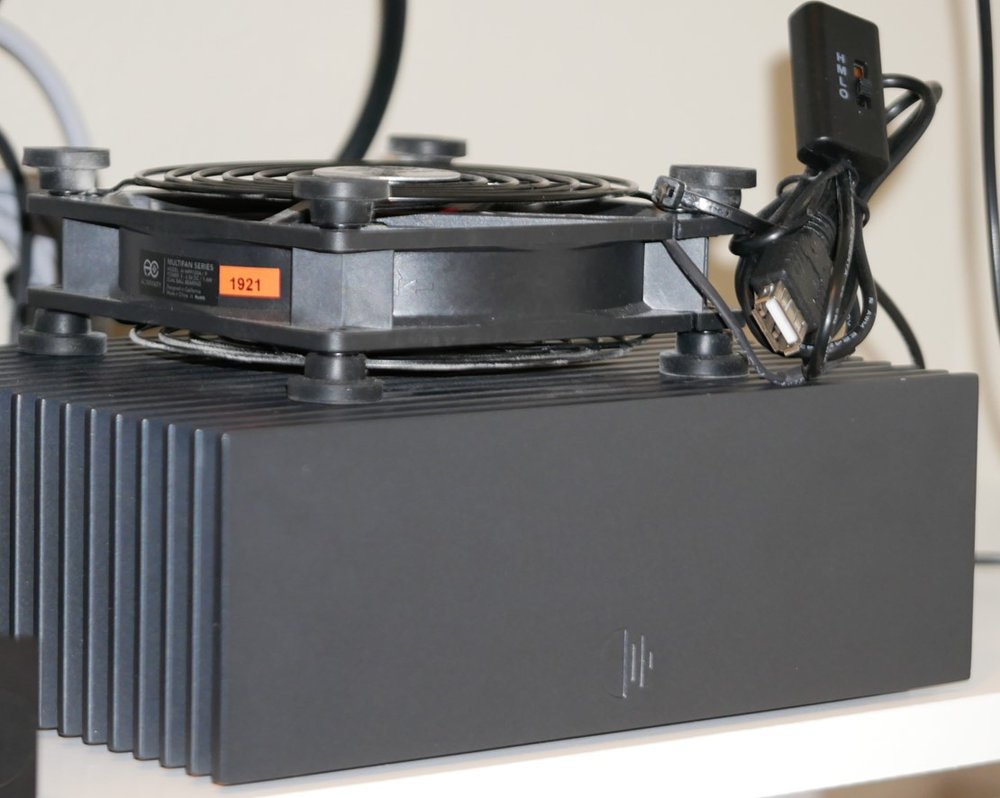
Now, let’s talk about the company’s cooling systems made for larger-sized gear of roughly 17” (43 cm.) width. They include the company’s Aircom T-series T8, T9, and T10 models, which have energy saving features that a muffin fan can’t provide. The T8, T9, and T10 are nearly identical, the biggest difference among them being the direction of the air being expulsed. The T8 shoots out the back, the T9 out the top, and the T10 out the front—different configurations to suit different setups. The company also sells a less-expensive S-series of cooling models, but these products don’t have the front display that adorns the T-series ones, and as such do not show temperature settings, and they don’t offer the possibility to preset an activation temperature. But they do have a 4-speed fan and perform in much the same way as the T-models. I own both a T8 and an S8, using the former atop my power amplifier and the latter atop my AV processor/preamp (photo 4).
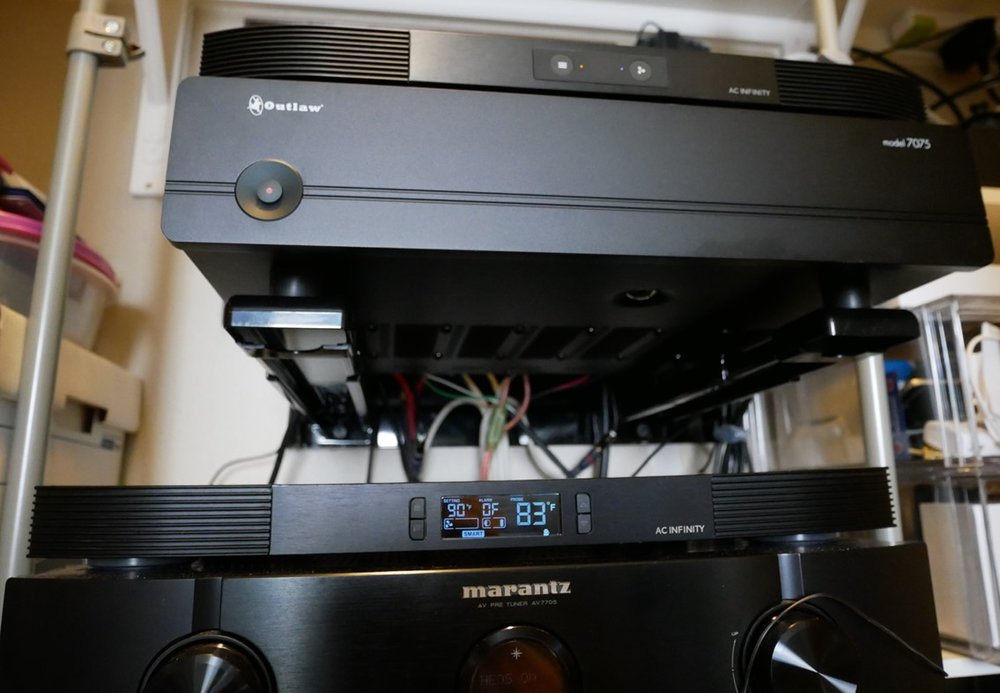
There are other manufacturers of component cooling fans, but I’ve been unable to find any whose products offer as much flexibility or features, near the same price point, as those from AC Infinity. Crutchfield is marketing a product called ATM Cool-It II Component Cooler, which has two built-in fans and sells for about $109. It offers adjustable on/off setpoints, but lacks the speed controls of the AC Infinity products. Also, unlike the Crutchfield product, AC Infinity’s components are designed to fit perfectly over the top of most components, plus they have the aforementioned venting options. AC Infinity’s T8 contains three fans and sells for about $129.
Cubic Feet per Minute (CFM)!
Besides noise, airflow speed is the most important feature of any fan-based cooling system. The T8’s three fans vent to the rear of my closet, which is ideal, because an enclosure that vents to the rear, as mine does, should have a cooling system that does the same. The T8 also has a display that allows one to adjust the fan speed manually or automatically. It has six speeds and a maximum airflow of 160 CFM.


Features!
The T8 allows considerable flexibility in controlling airflow. It has six fan speeds, which can be set manually, or automatically based on the temperature sensed by the probe mounted near the bottom of the unit. The fan is very quiet, but depending on where and how the unit’s placed, some sound may be heard at the highest settings. Vibration mounts within the cabinet help control the noise level by substantially dampening motor vibration.
The simplest operating mode involves turning on the fan and adjusting the speed control to any of the six airflow settings. The fan will then operate at the selected speed until the user turns it off via the mode button or changes settings via the mode button or speed settings.
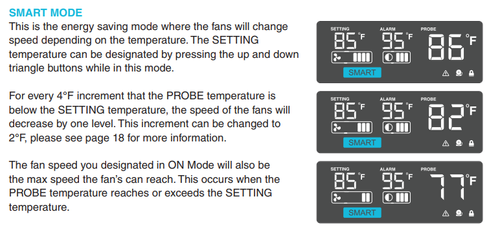
In the “Auto” mode, the owner can set an activation temperature for the fan to come on at a preset speed. This allows the fan to be used only when the component that it is cooling is in operation and generating a certain level of heat. The user can also set the speed setting to allow the noise level to be within a tolerable range. Once the fan is running, it will automatically turn off when the temperature has fallen by four degrees, or two, if so adjusted by the user, below the activation temperature. The “Auto” mode is a great way of ensuring the cooling system is operating only when needed. During operation, the fan’s speed can’t be changed from the preselected choice.
You can also set the T8 to “SMART” mode, which allows several fan speeds to operate in a sequentially descending order. In other words, once the activation temperature is triggered, the fans come on at the maximum preset speed, then, at every four or two degree drop in temperature, decrease to the next speed level, until all the speed levels have been reached, at which point the unit will turn itself off.
Photo 7 shows the front view of the T8 display panel. Here, the unit is in “SMART” mode, with an activation temperature setting of 89°F. I preset the fan so that the highest setting is the fifth speed (out of six), as confirmed by the number of illuminated bars that appear below the setting. Note that I set an Alarm temperature to 100°F. Should the probe sensor, which senses the heat coming from the adjoining component, detect 100°F in temperature, the unit will trigger an alert. However, with the fan on, that scenario is very unlikely to happen. I’ve set the unit so that the temperature needs to drop by four degrees from the activation temperature for the fans to shift to the next, lower speed, which will consequently turn off one of the illuminated bars. A display light setting is also visible in this photo.
I won’t mention all of the T8’s features or controls; suffice to say that the user manual explains everything clearly and makes setting the controls easy (photo 9). The T8 offers great flexibility and quiet operation, but the biggest draw for me was the unit’s 6-speed fan setting. In my home, AC Infinity’s products have proven to be effective and reliable—the fans are rated for 67,000 hours of continuous operation—and efficient in terms of energy consumption. A PWM-controlled motor is used to minimize noise during speed variations and the fans are suspended in mid-air with silicone mounts to absorb vibrations. The T8’s low-profile design allows it to fit in applications with limited height clearance, while its solidly-built aluminum and steel construction allows for a component up to 30lbs to be stacked on top of it. To me, the T8 is truly a great product and a no-brainer addition for audio setups that could benefit from a little cooling.
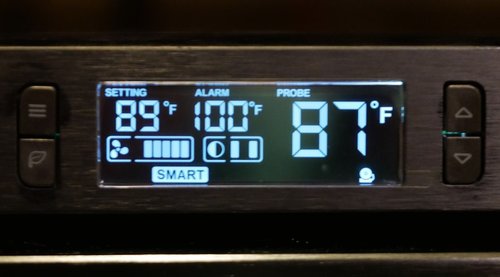
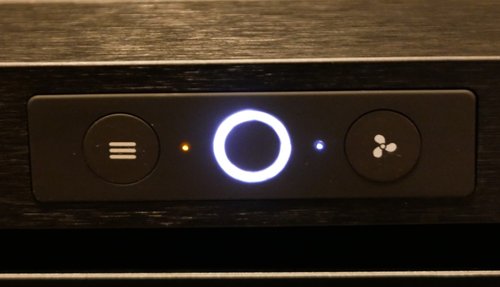
but has fewer features and a much smaller display. It sells
for about $40 less than the T8.
Bottom Line!
For anyone wishing to extend the lifespans, reliability, and optimal performance of their cherished components, I wholeheartedly recommend AC Infinity’s products. They’re priced right, work as advertised, offer great flexibility, and make little noise as they go about their business of keeping your system in top music-making form. What’s not to love?


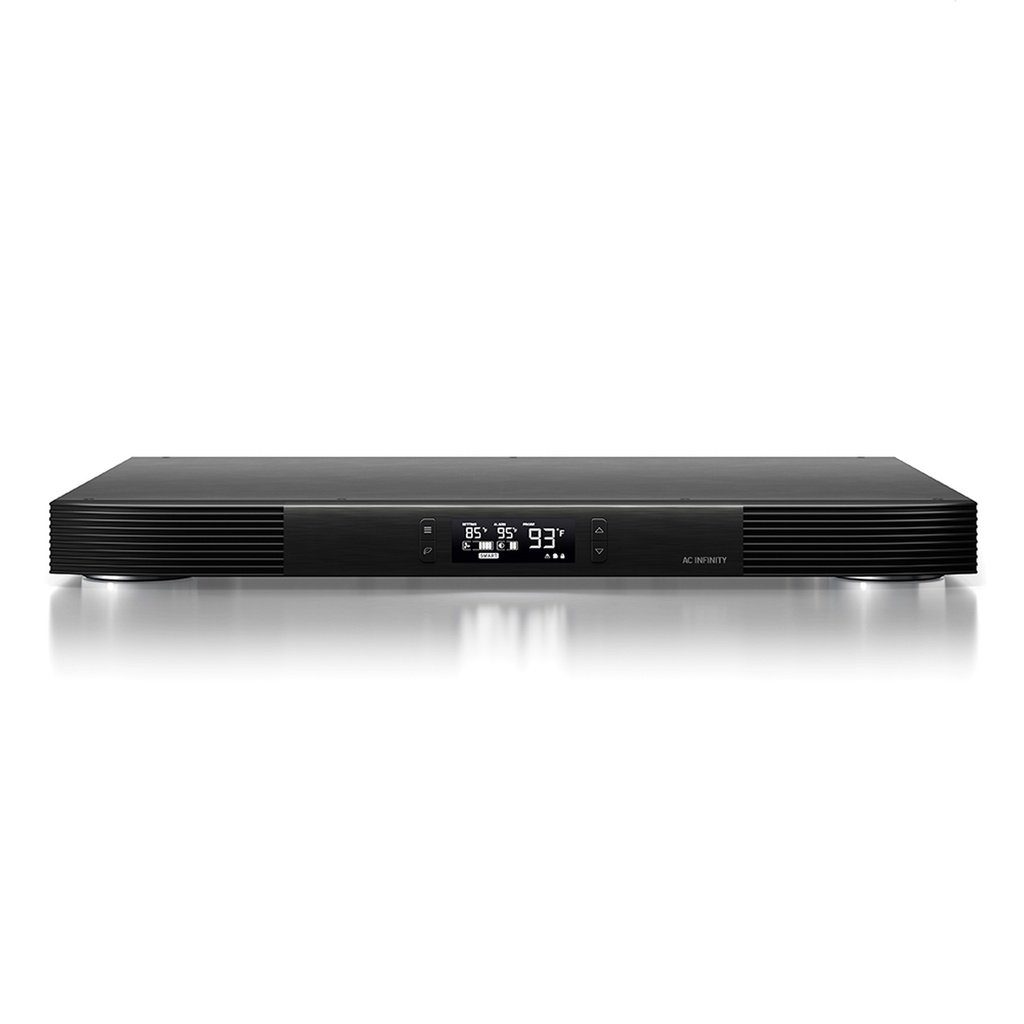


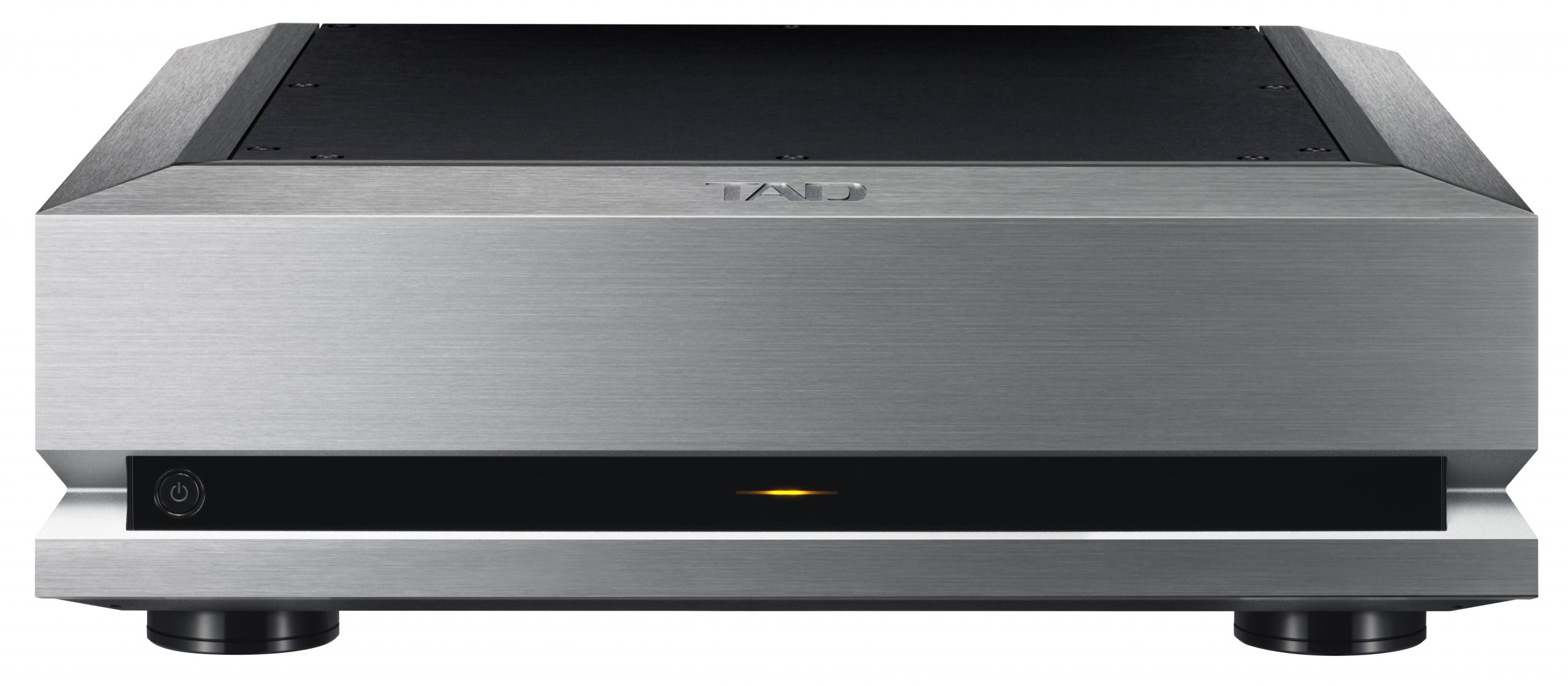

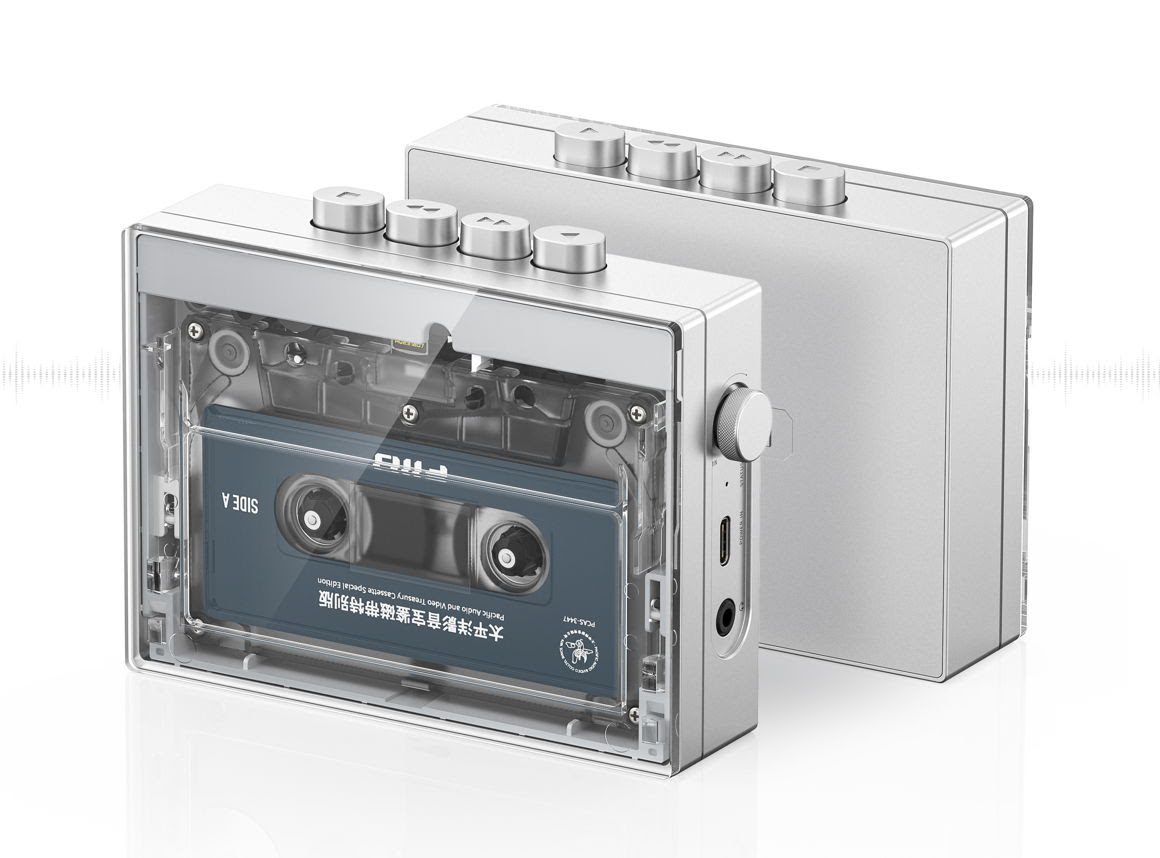


Leave a Reply